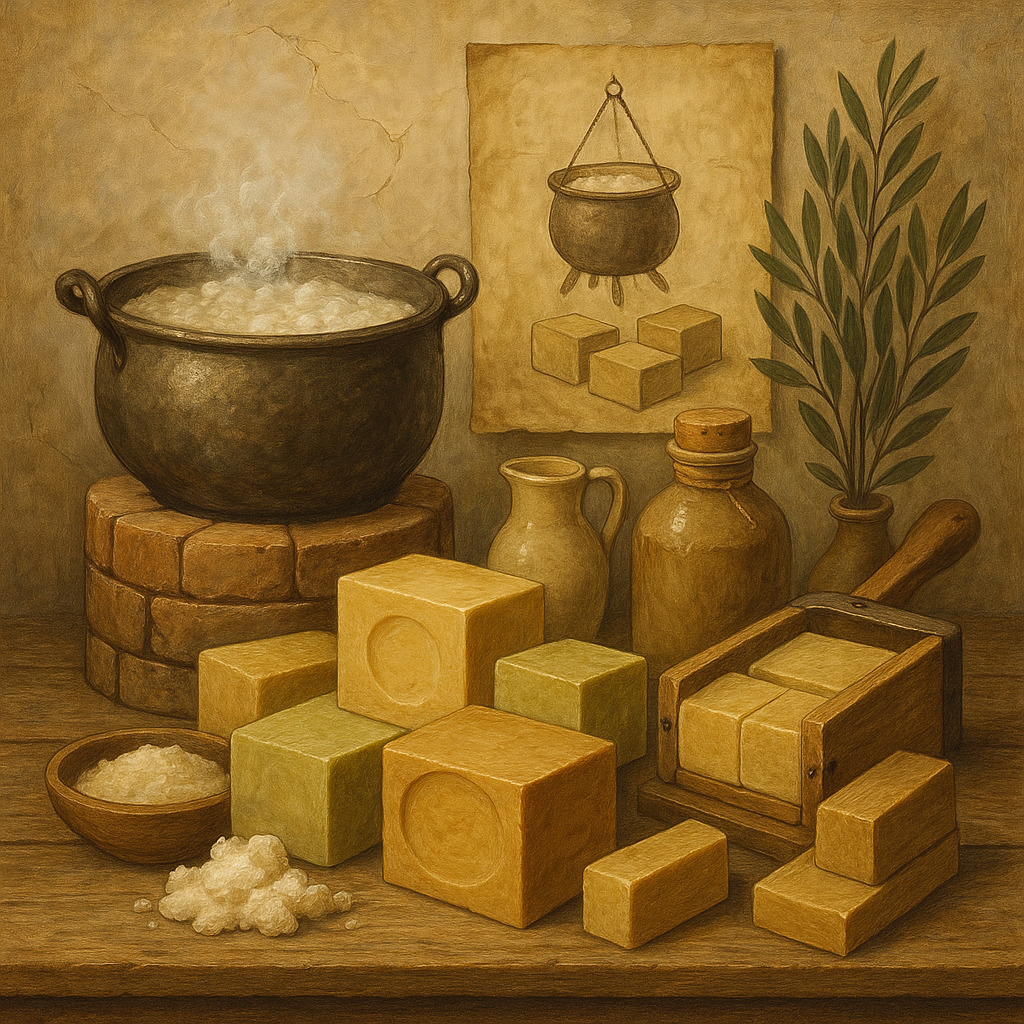
The History of Soap Making
Soap has accompanied humanity on its journey for thousands of years—an enduring symbol of purity, care, and ritual. The story of soap is not just about cleansing the body, but also about our evolving relationship with nature, science, and self-care.
Ancient Beginnings
The earliest records of soap date back to around 2800 BCE in ancient Babylon, where a clay tablet described a rudimentary soap made from water, alkali, and cassia oil. Meanwhile, in ancient Egypt, soaps were created using animal fats and alkaline salts to cleanse and treat the skin, a practice considered both practical and spiritual.
The Greco-Roman Touch
In ancient Rome, soap took on new significance. Though the Romans bathed frequently, they initially used oil and a scraping tool called a strigil. Over time, a soap-like substance made from tallow and ashes became popular in both bathing and laundering. The word soap itself is believed to come from Mount Sapo, a fictional location in Roman lore where fats and wood ash from animal sacrifices ran down into the river—discovered to be useful for cleaning.
The Art of Soap in the Islamic Golden Age
During the 7th to 11th centuries, Arab chemists refined soap-making into a true art. They introduced perfumes and experimented with vegetable oils like olive and laurel, laying the foundation for many modern soaps. Their advanced techniques spread into Europe through trade and cultural exchange.
Europe’s Soapy Renaissance
By the Middle Ages, soap-making guilds were established in Italy, Spain, and France—regions rich in olive oil. Marseille and Castile became renowned centers of high-quality soap production. These soaps were gentle, luxurious, and plant-based, used not only for hygiene but as cherished household items.
The Modern Era
The Industrial Revolution transformed soap from an artisanal product into a mass-produced commodity. Chemists discovered the science of saponification—the reaction between fats and alkalis that creates soap. By the 19th century, soap became more affordable and widely used, closely linked to public health and hygiene.
A Return to Origins
Today, as we become more conscious of what touches our skin and enters our waterways, the craft of soap-making has come full circle. Clean beauty advocates, artisans, and luxury brands are returning to time-honored methods, emphasizing natural ingredients, sustainability, and sensory experience.